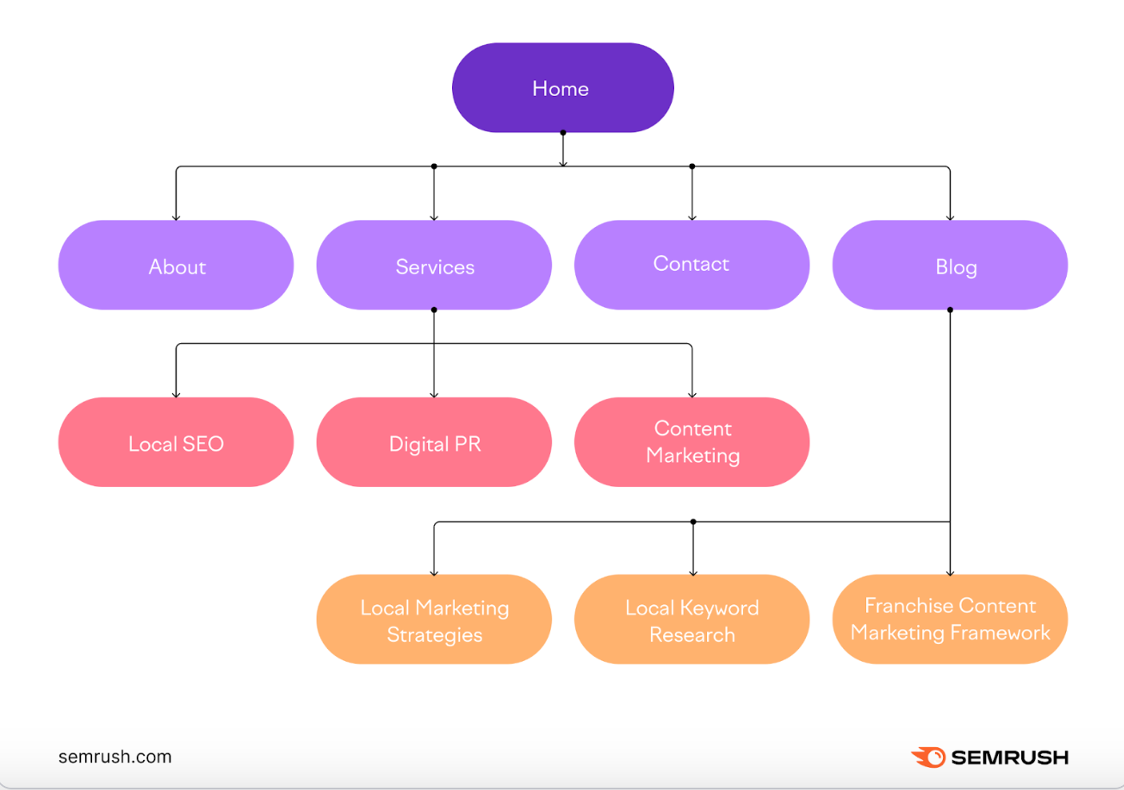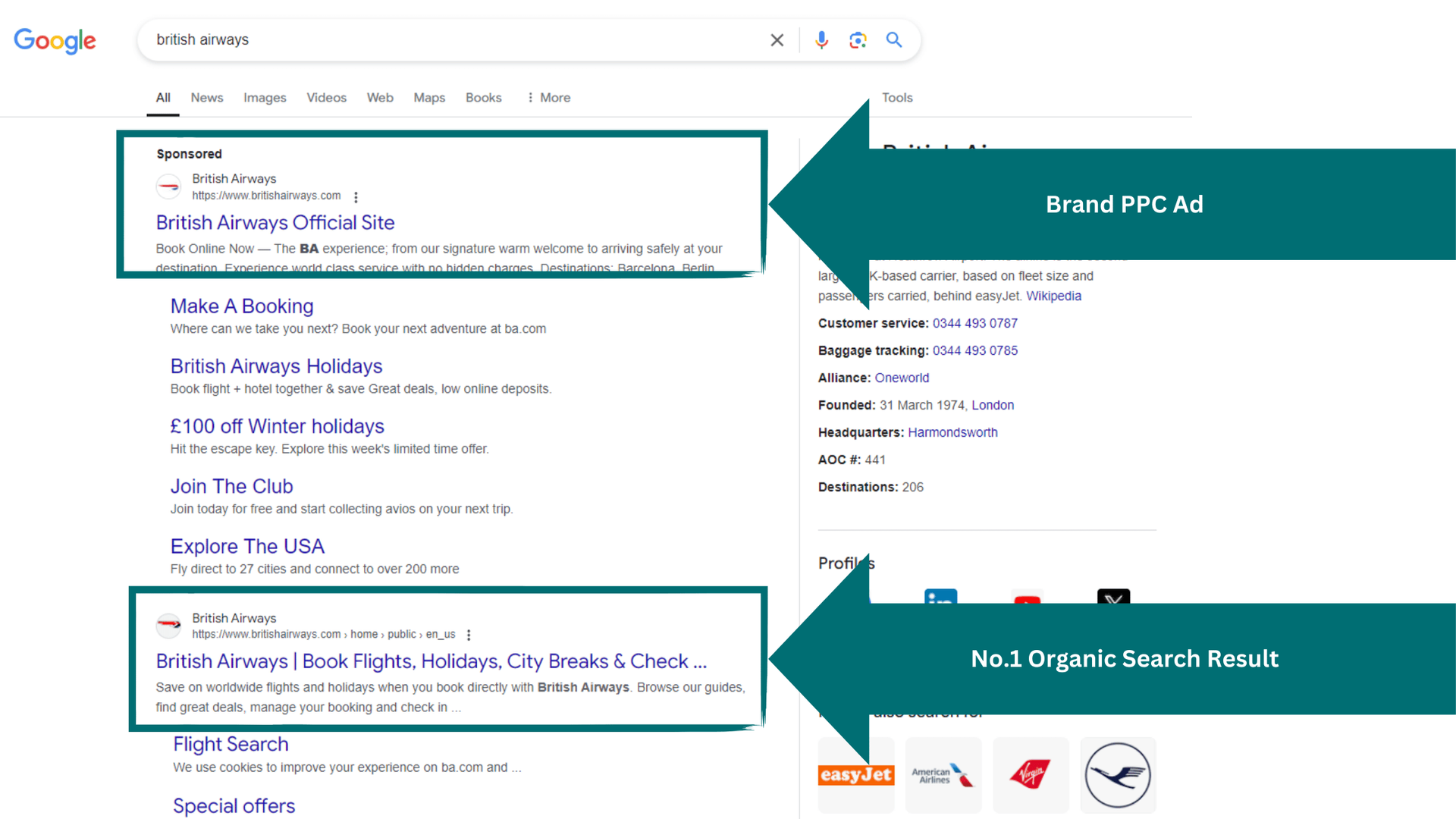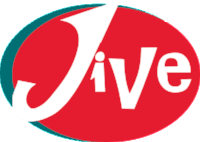Getting Your New Business Website Off to an SEO-Friendly Start: Our Top Tips.

You only get one chance to make a great first impression - especially online. That's why implementing SEO best practices from the start is crucial when launching a new business website. With some strategic technical optimisations and quality content planning, you can kickstart your site's search visibility and attract more of your target customers.
How do you make your website more Google friendly from the start? Follow our top tips to ensure your new website has the foundations for SEO success:
Choose an SEO-Friendly Platform and Domain Name:
Your website's backend platform and framework impacts critical elements like site speed, URL structure, meta data options, and more. Our clients like to use the following web platforms to build their websites:
- WordPress
- Wix
- HubSpot
Amongst the hundreds of platforms available, we recognise these as some that feature very user-friendly SEO optimisation across all pages on the website. They are all scalable as your business grows, with many widgets and plugins that can be personalised to suit your individual requirements.
Research Optimal Target Keywords For Your Business:
Rather than guessing at relevant keywords, you need to identify which keywords your target audience will be searching for in order to find your product or services. Start with a list of keywords you think suit you best, and then use a keyword planning tool such as Google Keyword Planner or SEMrush to expand the list. You can use SEMrush's Keyword Magic Tool to generate semantic keyword ideas for every stage of the buyer journey and then group keywords by topic clusters and difficulty to inform your site content structure.
Be sure to gather keyword metrics like monthly searches, CPC, and keyword difficulty scores. This data will guide your priorities for content creation as well as on-page optimisation.
This is where it’s handy to have an SEO agency work with you, as these tools are not free, and can add significant costs to your marketing budget. Any good SEO agency should have a subscription to one of these tools and not pass any software subscription costs onto the client.
Structure Your Site for Crawlers:
Site architecture decisions - like your URL structure, site speed, internal linking, and more - carry both user experience and technical SEO implications.
Keep your site navigation simple with a silo structure grouped by logical topic categories that target users would search for and expect to see. Have a consistent URL pattern across all site pages and posts for easy crawler readability (for example, jiveagency.com/services/SEO).

Optimise Title Tags and Meta Descriptions:
These critical on-page elements influence both SEO and user click-through rates from search engine results pages (SERPs). Meta Data tells Google and other search engines what each of your website pages are about, labels the content on the page and even lets them know what your images are of. Follow our best practices when writing your meta data.
- Keep your meta title under 60 characters with your most important target keyword used early.
- Avoid duplicate or boilerplate titles across your site
- Use branding and keywords that would entice users to click
- Use header tags (H1, H2, H3) to structure content.
-Ensure image alt text is descriptive and includes keywords.
-Implement schema markup for rich snippets.
The meta description gives you a content snippet to convince searchers why your page merits a click. Use 160-character max length descriptions that uniquely describe what value each page offers with some call-to-action language mixed in.
Create Useful, Informative Content:
At its core, SEO is about satisfying searcher intent with quality content on a consistent basis. You can directly answer audience questions and provide solutions with different content types:
Blog Articles: 1500+ word topical guides on issues that impact your customers.
Videos: Demonstrations explaining how your product or service works.
Tools and Calculators: Resources that help simplify complex processes.
Optimise each piece of content for relevant keywords, links to authority domains, structured data markup, and suggested related products or services a visitor may also find helpful based on what they're viewing.
The more value your overall site provides, the more trust you'll build in the eyes of both search engines and visitors.
Ensure Your site is mobile user friendly:
Many websites look great on a desktop, but then fall on their mobile optimisation and usability. The more optimised you make your website for the ever-growing mobile generation, the more you are likely to increase user experience and keep users engaged for longer! Statista found that
over 60% of organic searches were from a mobile device in the US. That is over half of visitors potentially landing on your website on their mobile! It is also worth considering that many users may land on your website via social media, which is most commonly used on mobile and tablet devices.
Many web hosting platforms will either have automatic mobile optimisation of your site content built into their functions, or they will provide a separate mobile preview of the website, which you can edit and adapt in tandem to the desktop version. It can seem tedious to be checking two different designs when making changes or new pages – however we can guarantee that it’s worth it to capture your mobile customers. Want some extra help? Google has some useful how-to pages for mobile optimisation. Google also has a very useful tool for checking if your website is mobile optimised, which you can find here.
Link all of your social media accounts:
Speaking of website visits coming from your social media channels…. you should link them. It helps to build credibility for your brand when you appear on multiple platforms. Linking your social media accounts directly to your website, not only makes a potential customer’s life easier in terms of finding said platforms, but also helps you to easily share your new and fresh content on your website on a regular basis. Not to mention, it makes your website look more established and interesting. This will also help to form valuable backlinks from relevant and highly credible platforms, which leads us to our next point.
Include backlinks & have a plan to grow your backlinks:
A backlink is when one website links to another with an anchor text. An example of a backlink is any article you find that links to another source or website, you can find backlinks everywhere, especially on blogging websites that link to relevant articles and information sources regularly. Reaching out to credible sites that would be good for your topical content to be linked to is not a quick job, this is where an agency can help you plan an outreach strategy to target sites which have synergies with yours. Offer to return the favour and feature their content on your website and social channels where it’s a good fit.
Not all backlinks are good though; beware of toxic backlinks. Sometimes you can end up with links to your site that have questionable status and are from unsafe domains. If you have any of these, they can damage your SEO and need to be identified. This is another area where using an SEO agency will help to keep on top of them and use tools to ‘disavow’ them using Google Search Console. This effectively tells Google to ignore these domains and not to consider them when crawling your site.
Interlink between website pages:
Whilst we are on the subject of links, it is also very important to link between your own website pages. Make navigation simple, clear and ensure that your visitors can find what they are looking for with ease.
Not only does internal linking help your potential customers find what they are looking for, they also help Google to crawl your website effectively and establish a linking hierarchy… basically you’re telling Google which pages are the most important, and which pages feed off of those.
For example, you may have your home page which links to 3 different services, and from those 3 pages there may then be subpages with products and add-ons. Your interlinking between these pages will tell Google that your homepage is the most important, as its leading to all of the other pages. A good visualisation of this is the image we included from SEMrush above.
Study your SEO competitors and monitor your progress
Using SEO tools such as SEMrush combined with Google Search Console can give you a competitive advantage against businesses similar to yours. Tracking which keywords your competitors are ranking for and researching what content they are producing and which channels they are using, can help to mould your own SEO strategy and keyword choices.
It is also important to monitor your site health and fix any errors that may occur quickly and effectively, before Google starts to deprioritise your website in the rankings in favour of better performing sites.
Site errors that may affect your SEO:
- Broken links and 404 errors
- Slow page load speed
- An outdated Sitemap
- No interlinking pages or pages without links
- Pages accidentally set to no index
Many of these detrimental errors can be easily avoided if someone is regularly checking your website, updating backlinks, fixing broken links and tracking keyword rankings vs your competitors. If you don’t have access to a specialist SEO tool, Google Search Console will identify which search queries your site is getting impression and clicks for, plus it will crucially identify any performance issues under the “Core Web Vitals” category. This is where slow loading content can be flagged. You can also check that your sitemap is uploaded and which of your site’s pages are being indexed.
With this attention on your technical site health, authority building links, and search-optimised unique content, your new website can gain the visibility it deserves. Reach out for an SEO review to discuss how we can help analyse your website's existing foundations and build a better search presence. Contact us to find out how we can support you with your website SEO and improve your Google Search Rankings.











